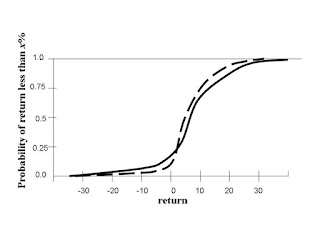I would say over the long-term that humans cannot really influence the direction of technology and I would say that there are certain inevitabilities in the progression of technologies. What we can influence is the character of the technologies.This brings out strongly for me the fundamental topic of emptiness and interdependent origination, and perhaps more fundamentally the topic of karma. I expect that Kelly appreciates the superficial absurdity of his statement, that humans cannot direct technology. Modern science has had some spectacular success in accepting some absurdity like this and following its implications to discover some very surprising facets of the world. Einstein's Theory of Special Relativity is probably the paradigmatic instance. Here Kelly follows the idea that technology is not directed by humans to the further notion that technology has become a seventh kingdom of life, alongside Plants, Animals, Fungi, etc. This is certainly a stimulating vision but it can be misleading too.
Clearly modern technology is a massive global collective activity and there is little that any single individual can do to direct its evolution. This, of course, is not unique to technology. Humans are social animals with extraordinarily complex patterns of cooperative behavior. Politics would be another primary example. Can human beings direct their own methods of conflict resolution away from violence and war and toward some more constructive approach? What sense does it make to talk of any group of humans or of humanity as a whole directing anything at all or indeed performing any action at all.?
Kelly asks us to imagine rewinding and rerunning history, like a laboratory experiment. This underscores the connection to the general puzzle of free will. Not only is it problematic to understand what it means to speak of a collective action, it is just a deep a problem to understand the nature of individual action. But look again at how the puzzle arises, where we rewind and rerun history. Here is an action that stands outside the history that is being rewound and rerun. Agency and free will belong properly to the subject, determinacy belongs to the object, or, where there is indeterminacy, that indeterminacy is attributed to chance. When a person keeps shifting perspective, looking ever more deeply within to find their own mind, the root of their agency, the failure to finally isolate subjectivity as an object is not due to the subject somehow being illusory in comparison to the reality of the object, but to the fundamental structure of conceptuality, the duality of subject and object.
There is indeed value to the kind of courage that can follow subtle clues, like the problem of the behavior of light in a moving frame of reference, to surprising conclusions, like the relativity of a relationship as basic as simultaneity. If the subject is not a contingent object but instead the mirror of the object in a duality that gives rise to both, then free will is not mere raw material to be incorporated into some technological system but a perspective that defines technology. Do bees make bee hives or are bees and bee hives together a system to be managed by bee keepers? This is a question of perspective, not one to be answered by accumulating data.
Our identity is so deeply enmeshed within our technology. We are the drivers of our automobiles, we are the readers and writers of our blogs and text messages. To see our technology as impermanent, as arising through causes and conditions, is to see ourselves as impermanent arisings. Not only do we have the power and responsibility to direct our technology, we have that same power and responsibility to create ourselves. To treat technology as inevitable is to deny our potential, a retreat from courage that can hide only temporarily and superficially from the deep currents of impermanence and interdependence. Waking up to the truth of our vastness is not a trivial matter but a process that begins with a choice, the choice to recognize that what we do, what we decide, makes a real and profound difference.






